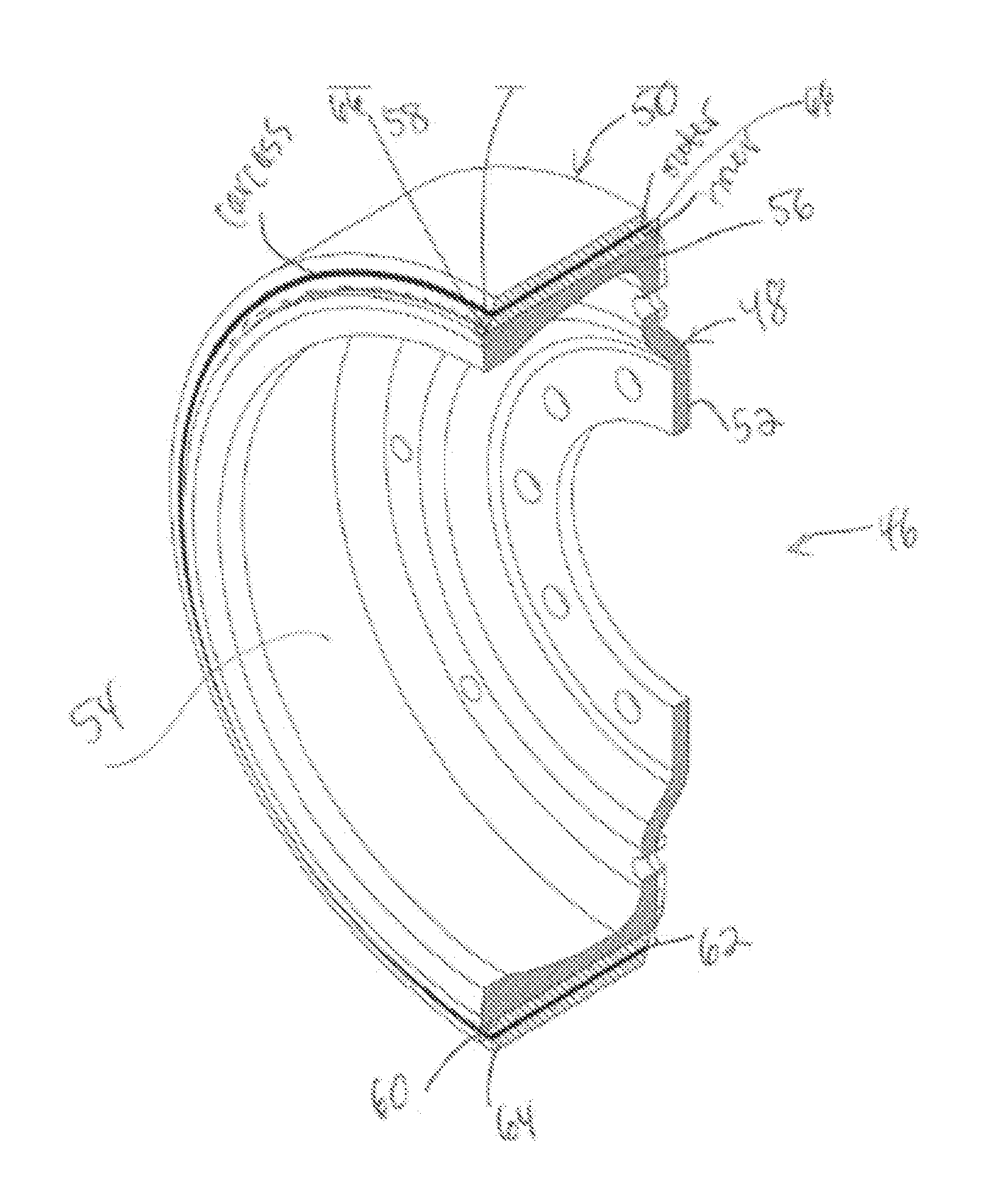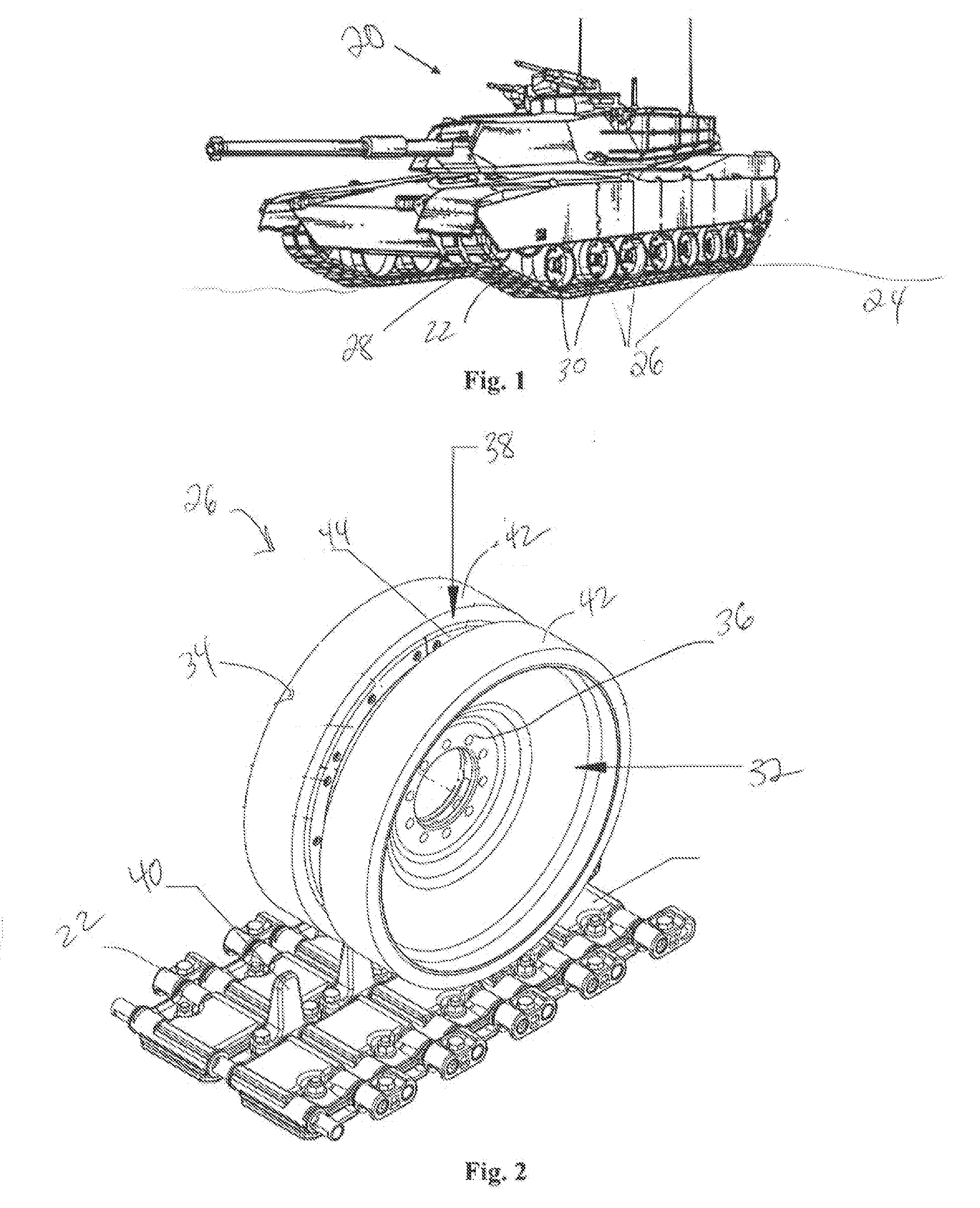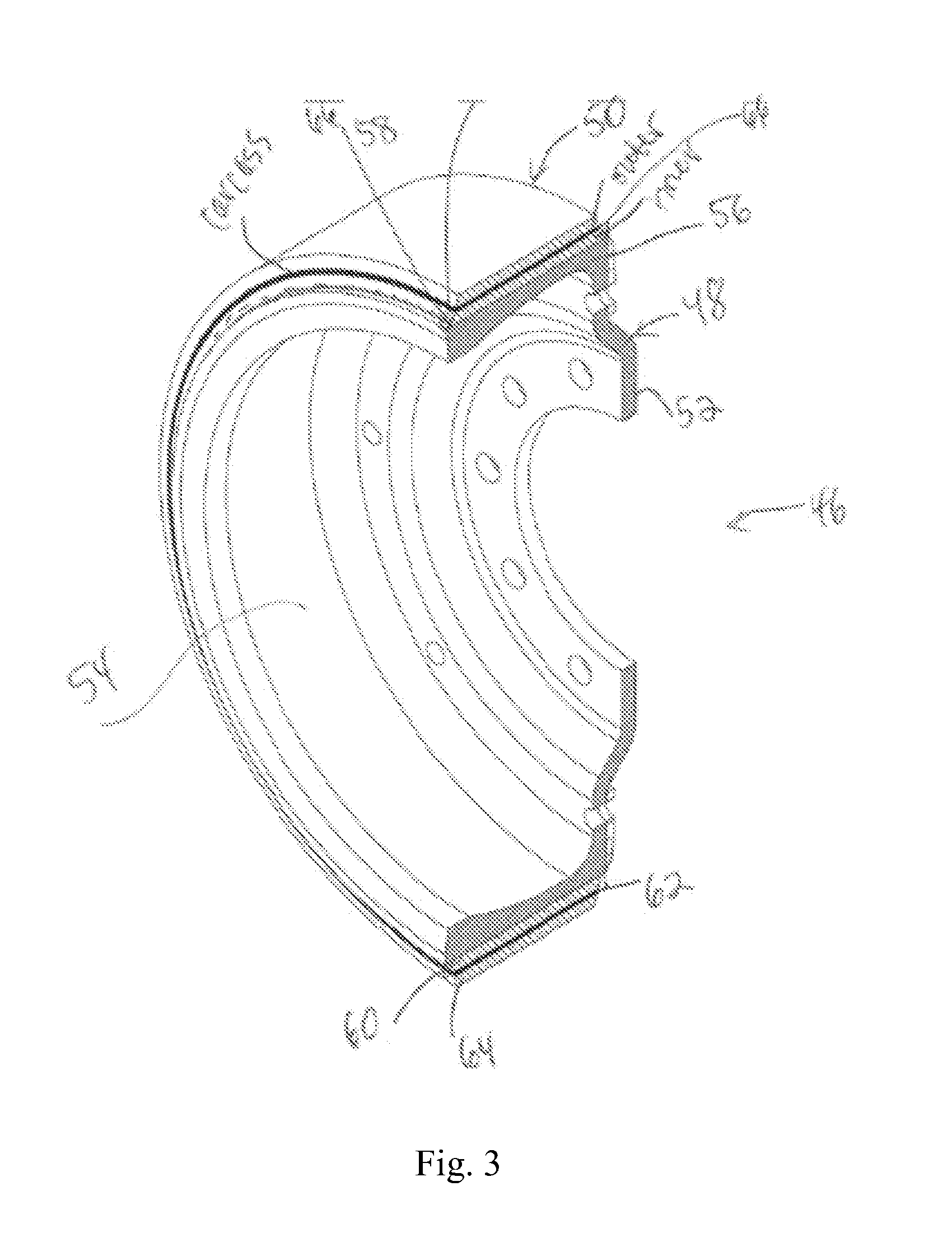Elastomeric tire for a tracked vehicle
a technology of elastomeric tires and tracked vehicles, which is applied in the field of non-pneumatic tires, can solve the problems of rubber tires blowing out and heat checking at high operating temperatures, affecting the service life of rubber tires, so as to prolong the useful life of tire assemblies and reduce the frequency of tire replacement. the effect of the frequency of replacemen
- Summary
- Abstract
- Description
- Claims
- Application Information
AI Technical Summary
Benefits of technology
Problems solved by technology
Method used
Image
Examples
Embodiment Construction
[0025]As required, detailed embodiments of the present invention are disclosed herein; however, it is to be understood that the disclosed embodiments are merely exemplary of the invention that may be embodied in various and alternative forms. The figures are not necessarily to scale; some features may be exaggerated or minimized to show details of particular components. Therefore, specific structural and functional details disclosed herein are not to be interpreted as limiting, but merely as a representative basis for the claims and / or as a representative basis for teaching one skilled in the art to variously employ the present invention.
[0026]FIG. 1 illustrates a tracked vehicle 20. The tracked vehicle 20 may be an armored tank as shown, and may also be any military, commercial, or other tracked vehicle as is known in the art. The vehicle 20 has a track 22 to interact with an underlying surface 24. The underlying surface may be a road, or uneven terrain such as dirt, rock, or the l...
PUM
| Property | Measurement | Unit |
|---|---|---|
| diameter | aaaaa | aaaaa |
| tensile | aaaaa | aaaaa |
| impact strength | aaaaa | aaaaa |
Abstract
Description
Claims
Application Information
 Login to View More
Login to View More - R&D
- Intellectual Property
- Life Sciences
- Materials
- Tech Scout
- Unparalleled Data Quality
- Higher Quality Content
- 60% Fewer Hallucinations
Browse by: Latest US Patents, China's latest patents, Technical Efficacy Thesaurus, Application Domain, Technology Topic, Popular Technical Reports.
© 2025 PatSnap. All rights reserved.Legal|Privacy policy|Modern Slavery Act Transparency Statement|Sitemap|About US| Contact US: help@patsnap.com



